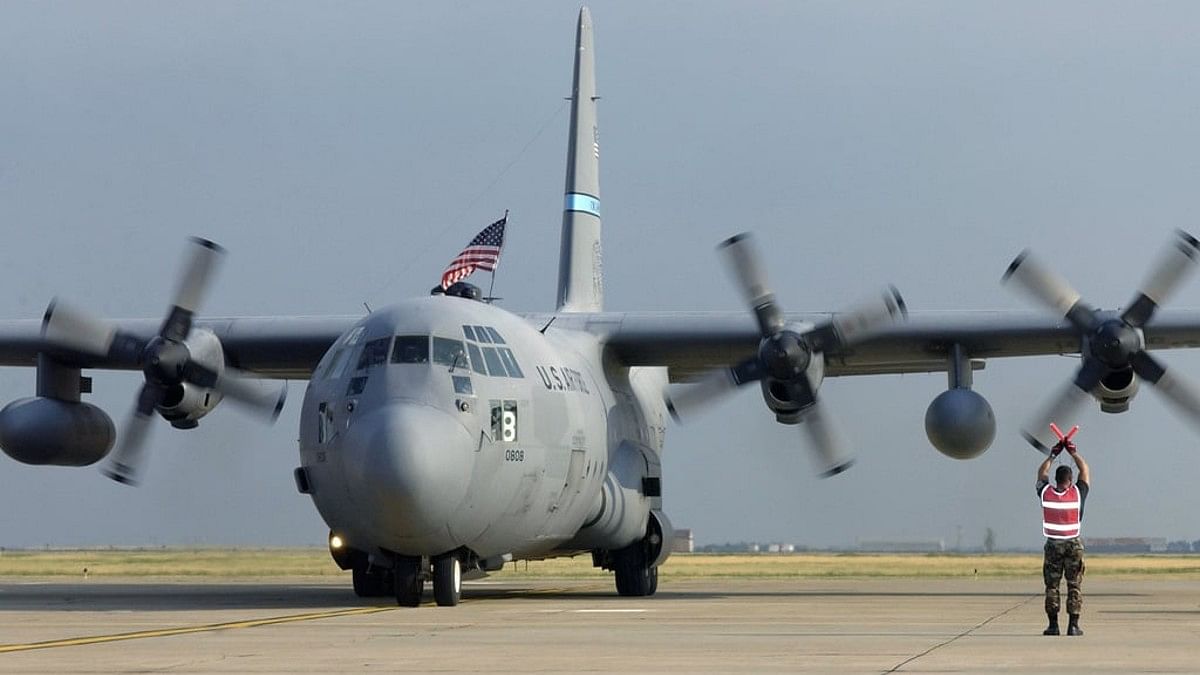New Delhi: The National Aeronautics and Space Administration (NASA) has dispatched the radar antenna reflector—a vital component of the NASA-ISRO Synthetic Aperture Radar (NISAR)—to India, onboard its four-engine turboprop military transport aircraft C-130 Hercules, the American space agency confirmed Friday.
In a statement, NASA’s Wallops Flight Facility said the C-130 Hercules team was carrying out a cargo transport mission to Bengaluru, India, in support of the NISAR mission. “The C-130 departed from NASA’s Wallops Flight Facility in Virginia, Tuesday, Oct. 15, to embark on the multi-leg, multi-day journey,” NASA said.
The statement added, “The flight path will take the aircraft coast to coast within the United States, across the Pacific Ocean with planned island stops, and finally to its destination in India. The goal: safely deliver NISAR’s radar antenna reflector, one of NASA’s contributions to the mission, for integration on the spacecraft.”
NISAR is an Low Earth Orbit (LEO) observatory being jointly developed by NASA and the Indian Space Research Organisation (ISRO) to map the globe in 12 days, while gathering spatially and temporally consistent data that will provide insights into Earth’s ecosystems, ice mass, vegetation biomass, sea level rise, groundwater and natural hazards including earthquakes, tsunamis, volcanoes and landslides, among others.
The satellite carries a Synthetic Aperture Radar (SAR) which operates in both L-band and S-band frequencies, to observe large swaths with high-resolution data, making it the first radar imaging satellite to use dual frequencies.
The SAR is a technique that uses a moving radar system to produce high-resolution images of Earth’s surface.
The initial plan was to launch the satellite early this year, but the launch had to be postponed after a minor fault was detected in the radar antenna reflector. The reflector—a part of the NISAR satellite—had to be returned to the US for a special thermal coating in March.
It is expected to reach India by the first week of November.
Senior officials said NISAR’s launch will likely be around February 2025 from Satish Dhawan Space Centre in Sriharikota onboard ISRO’s Geosynchronous Satellite Launch Vehicle Mark-II (GSLV Mk-II).
Also Read: Can Jupiter’s moon with water ocean support life? NASA spacecraft begins 5.5-yr voyage to find out
Journey to India
NASA’s latest statement said the cargo transport mission will encompass “approximately 24,500 nautical miles and nearly 80 hours of flight time for the C-130 and crew”. The flight took off on 15 October.
“The flight plan includes strategic stops and rest days to service the aircraft and reduce crew fatigue from long-haul segments of the flight and mnultiple time zone changes,” the US space agency said.
It added that before the C-130 reaches India, it will make a pitstop at the March Air Reserve Base in California to retrieve the radar antenna reflector from NASA’s Jet Propulsion Laboratory. It will also be stopping at the Hickam Air Force Base (Hawaii), Andersen Air Force Base (Guam), Clark Air Base (Luzon, Philippines), and Hindustan Aeronautics Ltd Airport in Bengaluru, India, for tests.
Mission technicalities
The spacecraft bus and the SAR payloads mounted on an integrated radar instrument structure (IRIS) are together known as the ‘observatory’.
The mission profile also highlighted that NISAR uses a sophisticated information-processing technique known as synthetic aperture radar to produce extremely high-resolution images.
Radar penetrates clouds and darkness, enabling NISAR to collect data day and night in any weather, the mission document said.
The instrument’s imaging swath—width of the strip of data collected along the length of the orbit track—is greater than 150 miles (240 km), which allows it to image the Earth in 12 days.
“By combining two kinds of synthetic aperture radars, it will offer measurements of Earth’s evolving surface—including changes in ice sheets and glaciers, wetlands and forests, and land around volcanoes and earthquake faults,” NISAR’s mission document read.
In an email response to ThePrint in April this year, NASA’s Jet Propulsion Laboratory (JPL) said that an addition of the special coating on the reflector was a precautionary step to mitigate any temperature increases that could potentially affect the deployment of the reflector.
“Testing and analysis identified a potential for the reflector to experience higher-than-previously-anticipated temperatures in its stowed configuration in flight,” the JPL said.
Also Read: How a collision with NASA spacecraft may have knocked an asteroid moon off course & out of shape

